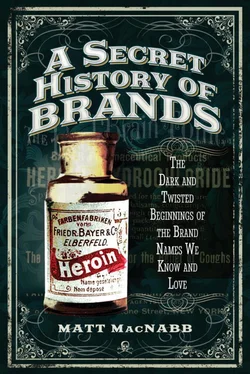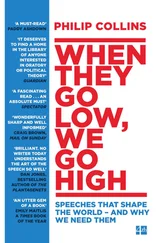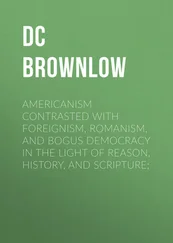The ripple effect caused by ‘Black Tuesday’ in America would change the course of the story of Hugo F. Boss, leading him right into the centre of the Nazis. The stock market on Wall Street crashed on 24 October 1929, driving the United States into the Great Depression, causing rampant unemployment and shattering America’s economy. The effect of this crash was also felt around the world and in Germany unemployment began to rise as the economy continued to suffer. The textile manufacturers were hit hard and by 1931 Hugo Boss was facing certain bankruptcy. Boss would make a deal with his creditors that allowed him to continue production, but clearly things weren’t going in a good direction for Germany and something needed to be done. This series of events led Hugo F. Boss right to the door of the National Socialist Party, of which he became a literal card-carrying member in 1931, two years before Adolf Hitler would seize power of Germany. The party was promising economic solutions for Germany, including ways to help the unemployment levels that were plaguing the country.
The Third Reich gave a good amount of business to Boss once he became an official party member. This came with restrictions, of course, because what they primarily wanted producing were uniforms and work clothing, but despite this, sales began to grow steadily from 1933 to 1938. Then, in 1938, the big commissions for Nazi uniforms began to flood in. Boss and his workers were thrilled with the influx, feeling that they had finally ‘made it’. Boss would peak in profits around 1942, but that is where it would level out, because the Third Reich put a cap on the costs that manufacturers could charge, in an effort to manage their own finances. The Boss factory was a ‘Price Category 1’, which essentially meant that they had the ability to produce the uniforms that the Nazis needed at the lowest prices possible. Not great news for Hugo Boss, and his company wouldn’t develop into a huge corporation until long after his own death.
Prior to the war, Boss had produced everything from the early brown shirts, to black uniforms for the SS, and the Hitler Youth uniforms. During the war the Boss factory produced uniforms primarily for the German armed forces and Waffen-SS. The examination of the Hugo Boss company’s role in producing Nazi uniforms may be highlighted in this book, but they were far from the only manufacturer contributing to the cause; Boss was in no way a stand out in terms of production quantities or contributions. They were simply one of many in a vast country working as cogs in the Nazi machine. The fact that Hugo Boss is still a household name in high fashion today, despite the dark beginnings, is what makes it of such interest. It should be noted that while they produced uniforms for the Nazis, there is no reason to assume that Hugo Boss had anything to do with the design of any uniforms.
Forced Labour
The textile manufacturing trade in Nazi Germany wasn’t exactly the highest paid job that a worker could have. The uniforms were certainly a necessary part of the German war machine, but the serious workforce moved towards more lucrative trades, mostly involving weaponry and engineering. There was, therefore, a distinct lack of available and skilled workers for the textile industry. Enter one of the darker parts of the affiliation of Hugo F. Boss with the Nazis – forced labour. The Hugo Boss company first employed forced labour in April of 1940. The entire town of Metzingen would come to house a whopping 1,241 forced labourers during the war. There was a point when up to 180 of those workers were being made to work for Hugo Boss. This consisted of 140 forced labourers and forty French prisoners of war.
The majority of the forced workers were transplanted from Bielsko in Poland, because there was already a large textile manufacturing industry there, so the skilled workforce was already trained and ready to go. The Nazi Gestapo brought the workers in to be divided amongst the various textile manufacturers throughout Metzingen. When the workers arrived in Metzingen they were split up by gender; the women were placed with local families, while the men were moved into sheds in a dedicated Hugo Boss company encampment. Investigations into the male workers’ camp found that it was at least hygienic, but in 1943 a new camp was built to house all of the workers from the various Metzingen factories. The conditions at this camp were unstable at best, with food sometimes being scarce and the hygiene not to the standards of the previous accommodations. There is some evidence to suggest that Hugo F. Boss took certain measures to help the labourers receive treatment that was at least moderate, providing midday meals to them in the company canteen and trying to keep the female workers out of the camps. These measures were certainly a step in the right direction, but when you’re dealing with the topic of slavery, it’s all details.
Post-War Fallout
The allied forces occupying Germany at the end of the Second World War finally reached the streets of Metzigen in April of 1945. Between them, the allied forces of America, Britain, France and the Soviets split Germany into occupation zones. The zone that encompassed Metzigen would come to be occupied by the French troops. It was then that the denazification of the region began.
The concept of denazification was an effort to examine all of the public offices and positions of power and control within Nazi Germany and remove all traces of the National Socialist Party from those arenas. The denazification process would come to be especially critical of Hugo F. Boss. The Potsdam Declaration would detail the intentions of the Allied Forces clearly:
All members of the Nazi party who have been more than nominal participants in its activities and all other persons hostile to Allied purposes shall be removed from public and semi-public office and from positions of responsibility in important private undertakings. Such persons shall be replaced by persons who, by their political and moral qualities, are deemed capable of assisting in developing genuine democratic institutions in Germany.
This process would also trickle down to the educational and judicial systems, as well:
German education shall be so controlled as completely to eliminate Nazi and militarist doctrines and to make possible the successful development of democratic ideas. The judicial system will be reorganized in accordance with the principles of democracy, of justice under law, and of equal rights for all citizens without distinction of race, nationality or religion. The administration of affairs in Germany should be directed toward the decentralization of the political structure and the development of local responsibility. To this end: Local self-government shall be restored throughout Germany on democratic principles and in particular through elective councils as rapidly as is consistent with military security and the purposes of military occupation; All democratic political parties with rights of assembly and of public discussions shall be allowed and encouraged throughout Germany.
The denazification process wasn’t intended primarily to remove or examine business owners, but rather was meant to focus on political offices. The unique amount of involvement with the National Socialist Party that Boss enjoyed made him a prime candidate to be singled out. Hugo F. Boss was not only an active member of the Nazi party himself, but he had also become good friends with the despised regional Nazi leader, Georg Rath. The council decided to fine Boss a hefty 100,000 reichmarks, the second highest fine imposed in the region. It is clear that the French felt that Boss needed to be made an example of. Ultimately, Hugo F. Boss was classified by the French as a ‘follower’, thus he only received the punishment of a fine.
Читать дальше












